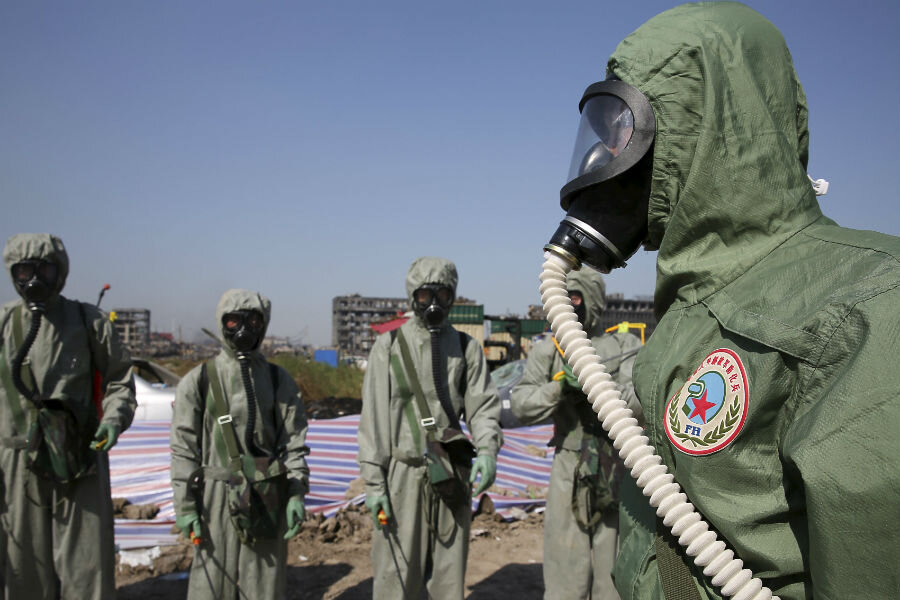Another factory explosion rocks China. Another case of corruption exposed?
Seven years ago, it was schools – more than 7,000 of them, which caved in a massive earthquake in Sichuan and took with them about 4,700 students. Those buildings had been shoddily constructed with substandard materials to line local officials’ pockets, a task force later found.
Then, in 2011, it was trains – two cars colliding in suburban Wenzhou, killing 40 people and raising questions about the rapid expansion of China’s high-speed network, according to The Independent. Liu Zhijun, the railways minister who was already under investigation, became center of one of the biggest corruption cases in Chinese history, eventually sentenced to death in 2013.
This month, two huge explosions and four fires have brought new sadness and embarrassment to this nation – once more spotlighting how civilian safety appears to be regularly sacrificed by corrupt officials. At the core of China's high-profile tragedies appears to be a problem of immorality.
On Aug. 12, a warehouse in Tianjin burst into two huge chemical explosions, leaving at least 121 people dead and local communities both terrified and indignant about potentially lingering toxic air.
Ten days later, Reuters reports that another blast has struck: this time, at a chemical plant in Shandong province, injuring nine people and sending tremors reverberating for at least a mile. Windows shattered. A villager going about his Saturday night reported seeing a large fireball from his backyard, according to The South China Morning Post.
In between these two explosions, four new fires had also broken out across Tianjin, three reported in the direct area of the blast and one at an automobile distribution center, reported The Asia Times. The fourth fire was suspected to have been caused by a burning fuel tank.
In light of the Tianjin disaster, the Chinese government ordered a nationwide inspection of workplace safety standards, reported The Associated Press, including an order to prosecutors to investigate any abuses of power that were tied to the warehouse explosion.
"We must thoroughly investigate [the incident] and hold accountable all those responsible," said Premier Li Keqiang. "We must give an answer for families of the victims, an answer for all residents of Tianjin, an answer for all Chinese people, and an answer for history."
Xinhua then reported that a joint owner of the warehouse was in fact the son of a former police chief, who had used his connections to obtain licenses for the facility in spite of the fact that it defied public safety regulations.
“China stipulates that dangerous warehouses must be 1,000 meters from major transport hubs and public buildings, but the warehouse was only 560 meters away from the Vanke residential community and 630 meters from a rail station,” noted the report.
But the story doesn’t end there. A New York Times investigation reported Friday that the Tianjin site is only “one of many buildings across China that store toxic chemicals near residential areas, in violation of safety regulations.”
Located near other similar facilities are highways and schools, according to the Times. Greenpeace said it had specifically identified hazardous chemical warehouses near residential areas in Shanghai, Guangzhou, Ningbo and Qingdao.
“It’s a wearily familiar cycle. Whenever there’s a high-profile tragedy in China, tales of official corruption and graft tend to ooze out from under the rubble,” reported The Independent.






